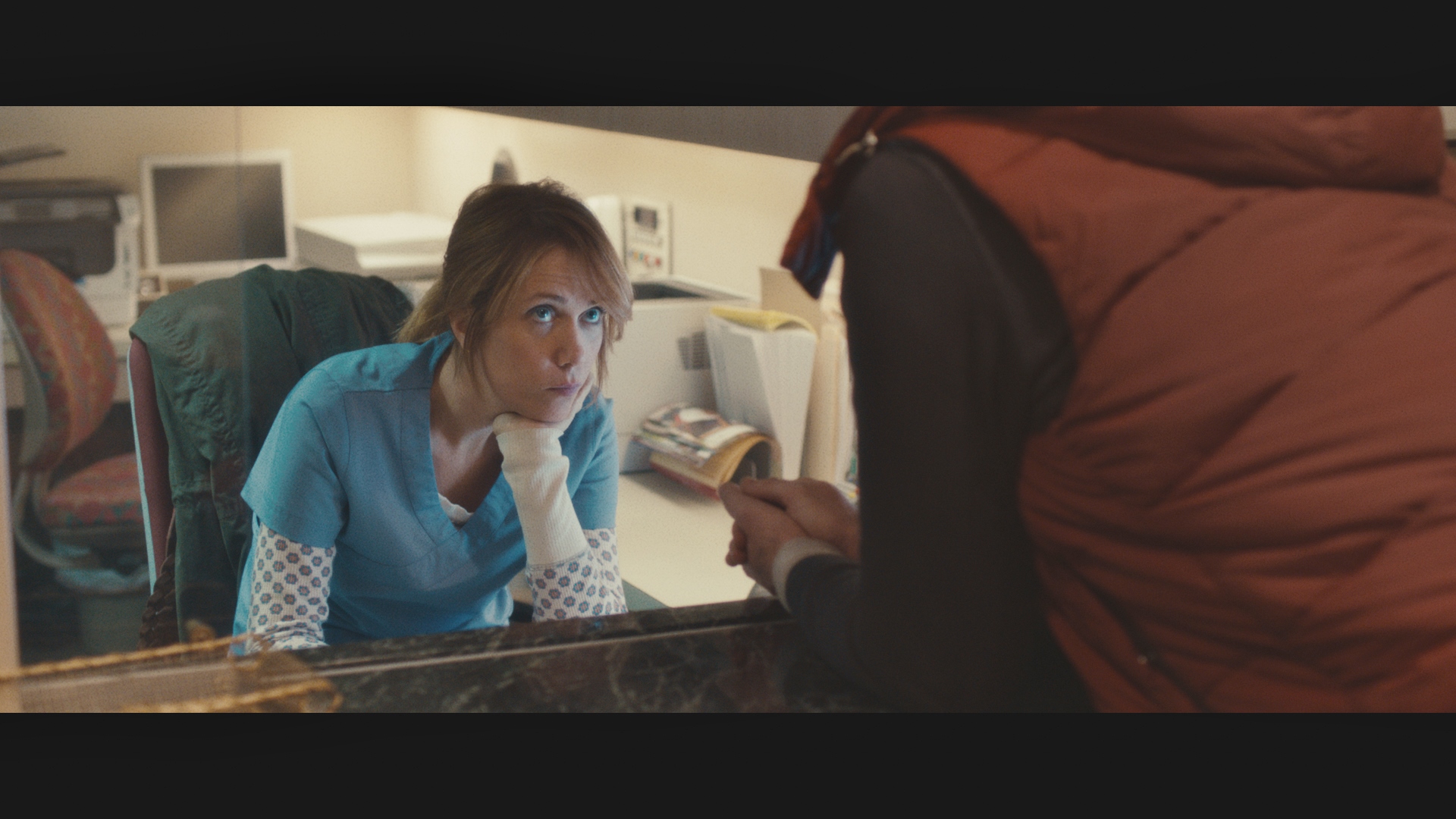My Old Lady
Opens Fri., Sept. 19 at Sundance and Alderwood 16. Rated PG-13. 104 minutes.
Most of My Old Lady is set in the kind of apartment you have dreams about after eating Camembert late in the evening: old, rambling, with a garden view through big upper-floor windows in the back. And, oh yes, it’s in Paris. The film is based on a play by Israel Horovitz, and no wonder Horovitz (making his feature-film directing debut—at age 75) chose not to open up the stage work; that’s one great pad. There are shots of characters strolling along the Seine to Mark Orton’s wistful accordion music, but mostly we’re indoors. The apartment is at the heart of the story, anyway.
A failed-at-everything 57-year-old blowhard named Mathias Gold (Kevin Kline) has arrived in Paris without a penny to his name. It’s all right, though, because he’s there to take ownership of the apartment his much-reviled father bequeathed him. Problem: The place was purchased, some 40 years earlier, in the French contract called viager, which means the seller gets to live in it until she dies, as the buyer pays a monthly stipend in the interim. And she—in this case 92-year-old Madame Girard (Maggie Smith)—is still very alertly alive. So is her daughter Chloe (Kristin Scott Thomas), and so are various ghosts from the past, many of which come staggering to life as Mathias moves into an empty room and schemes a way to undercut these entrenched ladies.
Horovitz makes feints in the direction of comedy early on, but despite Kline’s long track record in that arena, these are among the film’s least successful moments. (It’s always fun to hear this master of sarcasm get loose and begin putting quotation marks around his most pointed phrases, however.) Halfway through, the stakes get more serious, the behavior grittier, and the performers—especially Smith, who gets to act instead of relying on her tricks—pick up their game. Another plus is the absence of something shoehorned in for a younger demographic. The people onscreen have lived lives, and Horovitz doesn’t care that none of them is under 55. Is this enough to salvage the proceedings? Not quite—the pace is rocky, and everybody speaks as though they’re in a play. This is partially mitigated by the fact that if you’re going to have people running off at the mouth, you could do worse than this hyper-eloquent trio. Robert Horton
The Skeleton Twins
Opens Fri., Sept 19. at Harvard Exit. Rated R. 91 minutes.
This is the kind of movie that congratulates itself for casting a comedienne in a dramatic role and a straight male comic as a gay guy. Maggie and Milo are fraternal twins who are estranged (for 10 years), living on opposite coasts, and seriously depressed for reasons that seem dissimilar but boil down to past family trauma. That Maggie and Milo are played by Kristen Wiig and Bill Hader will get this mediocre dramedy more attention than it deserves. That their performances are good oughtn’t be surprising (the two SNL pros have plenty of experience with the comedy of awkwardness). That their script is so tonally sad-happy yet familiar, one has to attribute to the inexperienced writers. At NYU film school, Mark Heyman and Craig Johnson started scripting something about a student/teacher sex scandal, then shelved the project for years. After Heyman co-wrote Black Swan and Johnson directed True Adolescents here in Washington state (he being a Bellingham native and UW grad), they reconceived the project to focus on the damage wrought on Maggie and Milo many years later, as adults.
And from that, God help us, come healing and forgiveness and confronting the unpleasant past. What Skeleton Twins attempts, but fails, to bring to this sentimental game is against-the-grain novelty. You see, Maggie and Milo are catty, sardonic misanthropes, angry at the world because they haven’t lived up to their youthful potential. (When Milo says “We’re both fuck-ups,” it’s a badge of honor, really.) A failed actor, he returns home to New Jersey, where she’s a dental hygienist married to a doofus (Luke Wilson) whom she treats with gentle contempt (as does the film). Milo seems to have been jilted by some guy back in L.A., but the real problem (Ty Burrell of Modern Family) is waiting in his hometown. Why’d he come back? Perhaps Milo has a misguided notion of love—as opposed to Maggie’s inability to love. (Drunken bathroom sex with strangers is a different matter.)
Skeleton Twins tries very hard, too hard, to leaven the pathos in the Dean family’s past with Maggie and Milo’s insular humor. Still, the snark bogs down in melodrama, and no amount of ’80s pop montages can really change the film’s trajectory. (When even the bitter Maggie can declare “We’re supposed to be there for each other,” you know the cause is lost.) If the jokes were there, a spirit of wrist-slitting dark comedy might emerge. But Heyman and Johnson aren’t from the SNL or Apatow combines. Nor does Skeleton Twins compare well with straight sibling dramas like The Savages or You Can Count on Me. Perhaps the lesson to this heartfelt misfire is that mixing genres is very, very difficult. And if you don’t get the balance right, it’s like kissing your sister. Brian Miller
This Is Where I Leave You
Opens Fri., Sept 19. at SIFF Cinema Uptown, Guild 45th, and other theaters. Rated R. 103 minutes.
Why is this film not being released at Christmas? The sacred tradition of Jews and Chinese food and going to the movies on December 25 must be upheld! And if the fractious Altman clan is to gather for an awkward and altogether irreverent weeklong mourning period (sitting shiva) for its deceased patriarch, your family might well find some familiar types among them. The widowed mother (Jane Fonda) wears her conspicuous boob job with blithe pride, making her four grown children distinctly uncomfortable. Among them, Corey Stoll is the son who stayed to run the family business; Adam Driver is the ne’er-do-well youngest son who fled to the West Coast; Tina Fey is the unhappily married wife and mother, also visiting; and Jason Bateman is the New York radio producer whose marriage just imploded (not that he’s telling anyone, not just now, not on this trip, no way).
Now there’s a lot of ground to cover in this cluttered adaptation of Jonathan Tropper’s 2009 novel (he did the adaptation), directed with no great subtlety by Shawn Levy, who helmed all those wildly popular, family-friendly Night at the Museum movies. Clearly the studios are in his debt; he had money to spend on his starry cast, and he shows them all to maximum benefit (though none have to work very hard in so many short scenes). This Is Where I Leave You is A-material, originally attached to Steven Spielberg, which brings us back to the mid-September release date. It’s not coming out on Christmas for a reason.
Scene by scene, performer by performer, there are moments that work well here. Fey shows tender lost love for her old boyfriend (Timothy Olyphant), a guy who never left town owing to an accident; how culpable she was, the script is reluctant to spell out. (All parties must be treated fairly and sympathetically.) Driver, of Girls, brings a welcome jolt of energy to a feckless, underwritten character; I particularly liked his smilingly uncontrite reading of “I’m ashamed” when confronted with eavesdropping on sibling sex; the guy doesn’t know the meaning of the word. Bateman’s beleaguered, dry delivery is as effective as ever, though he can’t save lines like “I have spent my entire life playing it safe.” Outside the Altman family are some interesting women: Rose Byrne (pursuing Bateman), Connie Britton (tiring of Driver), and Kathryn Hahn (married to Stoll, also Bateman’s ex). You want to see more of them—especially Hahn’s guerrilla-comedy aggression (as demonstrated in Bad Words with Bateman) and Britton’s old-school glamour (she’s got such a poised, classic quality you could imagine her as a creature of the studio era).
On the whole, however, Levy is fatally wed to a formula of tears, outbursts, wise counsel, and reconciliation—repeated often. I lost track of the number of times Bateman and Fey sat on the roof discussing their siblings; one scene would’ve sufficed, and fewer but longer scenes might’ve allowed them to present full characters. But Levy cuts for comedy, regularly interrupting the pathos—remember the dead father? that guy?—with pooping toddlers and antic fistfights. But if you like a nice buffet after the funeral, This Is Where I Leave You offers something for everyone: adultery, surprise pregnancy, and sudden declarations of sexual orientation. And maybe that’s your family, too, or how you spend the holidays.
Says Fonda, prophetically, “It’s gonna be hard. It’s gonna be uncomfortable. And we are all gonna get on each other’s nerves.” Oh, wait, were we not talking about the movie? Brian Miller
Tusk
Opens Fri., Sept. 19 at Meridian and other theaters. Rated R. 102 minutes.
Basing a film on a podcast, or even a single extended joke within a podcast, isn’t the worst grounds for picking up a movie camera. Books, plays, comics, famous figures from history or sports, news stories, whatever—the inspiration doesn’t matter. Execution is what counts. (What’s the old saw about paying to hear Orson Welles read the phone book?) So if Kevin Smith wants to spin a Gothic tall tale out of an urban legend, fine—swing away, boys.
The challenge for Smith, who can write pages of wonderfully meandering, inquisitive dialogue when so inclined, is to develop this riff into a solid script. On their podcast, he and Scott Moser were tipped to a British online ad for a roommate posted by a guy with a walrus fixation (a put-on, as it turned out), which he then expanded—stretched is more like it—into a whimsical horror yarn. And so eager is Smith to get to the big, spooky house with its strange Canadian owner (an ancient mariner, no less!) that he rushes past the most fertile ground for satire. Los Angeles podcaster Wallace (Justin Long) was once a decent if geeky human being, as his girlfriend reminds him, but his podcast has become a mean-spirited freak show and he its cruel barker. Yet here Smith does not dwell.
Wallace and Teddy (Haley Joel Osment, now a chipmunk-cheeked young adult) are the obnoxious hosts of what they call The Not See Party, a pun they will later have cause to regret. Their stock in trade is assembling viral videos and various Internet schmoes to ridicule; their tone is more TMZ than I Can Haz Cheezburger. They’re the sons of Howard Stern, who reflexively disparage everything and everyone below them on the celebrity food chain, not the actual powers on high. And thanks to our shameless share-all culture, people keep putting things on the Web for them to mock.
Traveling to Winnipeg, where one podcast story abruptly dies out, Wallace stumbles onto another: a roommate-wanted flyer posted above a urinal, written in briny cursive on yellowed parchment. He’s intrigued, so he drives to the remote mansion of old, wheelchair-bound Howard (Michael Parks, from Smith’s Red State), who turns out to be a gold mine of story material (some of which Smith illustrates in black-and-white flashbacks that show the influence of Winnipeg’s leading auteur, Guy Maddin). Howard met Hemingway, collects curios in trophy cases, and regularly quotes Coleridge and Kipling. Wallace is enchanted, then sleepy, and he will soon wake into horror, like The Human Centipede meets Edgar Allan Poe.
Wallace’s girlfriend (Genesis Rodriguez) and Teddy eventually fly up to Canada to find him, aided by a slumming A-list star with a French-Canadian accent. (Give that Guy LaPointe a TV show already, and some better lines to deliver.) Their rescue mission comes too late, however, and Smith spends far too much of the movie in long, static scenes at the mansion. You want Tusk to develop into an Abbott and Costello comedy, with more gags, monsters, chases, and pratfalls. Instead, Smith doggedly clings to the punishment theme in this one-note stunt movie. Brian Miller
E
film@seattleweekly.com






